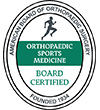What are shoulder stretches?
Shoulder stretches can help relieve pain and stiffness in tight shoulders, which are a common problem among most adults. Stretching is a great way to improve flexibility and mobility and prevent injury.
In terms of glenoid defects, does size matter?
Apparently so. A new study looking at the postoperative recurrence rate after arthroscopic bony Bankart repair found that it was lower in male competitive rugby and American football players with a large glenoid defect, in fact 3x lower, than in those with a small glenoid defect.
What is water on the knee?
Knee effusion, sometimes called water on the knee, occurs when excess fluid accumulates in or around the knee joint. Common causes include arthritis and injury to the ligaments or meniscus, which is cartilage in the knee.
Dead arm syndrome: Symptoms, causes, and treatment
Dead arm syndrome is a condition that affects the shoulder. It’s caused by repeated movements, which place stress on the joint.
Acetaminophen’s role in pain management after arthroscopic rotator cuff repair
Including acetaminophen for pain management prior to and after arthroscopic rotator cuff repair can significantly reduce opioid consumption and improve patient satisfaction postoperatively. Not only that, but patients who take acetaminophen perioperative can also have better pain control, even while consuming fewer opioids.
Jumper's knee: Symptoms, diagnosis, treatment and prevention
If you're an athlete who does an activity with a lot of jumping involved, or if you have a child or teen who plays such a sport, you may one day find yourself with jumper's knee. In the medical world, it's known as patellar tendonitis or patellar tendinopathy.
What is frozen shoulder?
Pain and stiffness in your shoulder can make every activity including sleep difficult. Worsening shoulder pain, especially at night, could mean you have a frozen shoulder, says Dr. Christopher Camp, a Mayo Clinic orthopedic surgeon.
What to know about lateral collateral ligament injuries
The lateral collateral ligament (LCL) is a thin band of connective tissue that runs along the outside of the knee. It connects the femur to the fibula and stabilizes the knee, bracing it from unusual impact. However, injuries are common, particularly during contact sports.
Subacromial balloon spacer versus partial repair for massive rotator cuff tears
Use of a biodegradable balloon spacer during massive rotator cuff tear surgery produced similar outcomes when compared to partial rotator cuff repair for patients with massive rotator cuff tears (MRCTs) at 24-month follow up, with potential for early improvement.
How to Avoid the Ominous ‘Pop’ That Signals a Torn ACL
Every athlete wants an answer to the million-dollar question: “How can I avoid tearing my ACL?” “Proper form can help athletes avoid this serious injury,” says orthopaedic surgeon.





